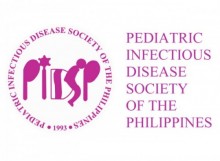Journal 2018 Vol.19 No.2
Microbiologic Profile and Predictors of Severe Outcome of Pediatric Cancer with Febrile Neutropenia Admitted at a Tertiary Medical Center
Andy T. Panes, M.D., Cherry May Villar, M.D., Mary Antonette C. Madrid, M.D.
Abstracts
Background: The treatment of pediatric cancer has advanced dramatically. With the discovery of newer, more potent chemotherapeutic agents, patients are confronted with severe and prolonged degrees of neutropenia, which has inherent consequences.
Objective: The study aimed to determine common microbial isolates and predictors of severe outcome of pediatric cancer patients with febrile neutropenia aged 0-18 years old admitted at a tertiary hospital.
Methods: This was a cross-sectional study on pediatric cancer patients with febrile neutropenia admitted at the Philippine Children’s Medical Center from March 1,2017 to September 30,2017.The clinical presentations of subjects were noted. Patients were categorized as to the presence or absence of severe outcomes. Common microbial isolates were noted. Predictors of severe outcome were identified using stepwise logistic regression analysis.
Results: Out of 105 enrolled patients, 32 developed severe outcomes. The most common isolates were Klebsiella pneumoniae followed by Escherichia coli and Candida species. Univariate analysis showed that acute myelogenous leukemia (p-value: 0.0195), treatment relapse (p-value: 0.0131), ANC on admission 7 days during admission (p-value: 0.0001), non-response to empiric antibiotics (pvalue:0.0001), microbiologically-defined infection (MDI, p-value: 0.0001), fever without a focus p-value:0.001), bloodstream infection (p-value: 0.0192), unknown focus of infection (p-value: 0.0058), and a positive culture (p-value: 0.0001) were related to a severe outcome. None of these predictive variables, however, were statistically significant on multivariate logistic regression analysis.
Conclusion: K. pneumoniae, E. coli and Candida were the predominant organisms identified in febrile neutropenic cancer patients in our institution. Although AML, treatment relapse, profound neutropenia, fever of >7 days during admission, nonresponse to empiric antibiotics, MDI, fever without a focus, bloodstream infection, unknown focus of infection and a positive culture were related to a severe outcome, multivariate regression analysis did not show these to be significant.
Keywords: Microbiologic profile, Fever, Neutropenia, Predictors
https://doi.org/10.56964/pidspj20181902006
| View Full Article in PDF format |
Journal 2018 Vol.19 No.2 Original Articles 4pidsp@uplink.com.ph2022-12-10T09:03:44+00:00
